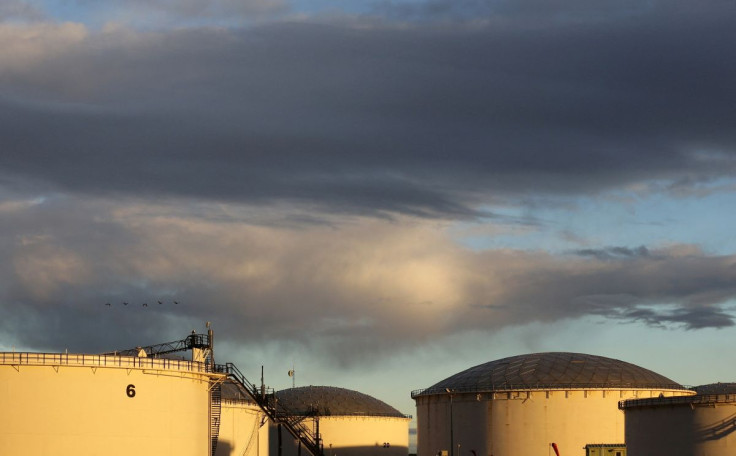Oil Prices Tick Up On Supply Concerns After Price Cap On Russian Oil

Oil prices edged up on Friday in choppy trading after Russia said it will not supply crude to countries that decide to impose a price cap on its oil.
Brent crude futures rose 87 cents, or 0.8%, to $104.75 a barrel by 10:54 a.m. ET (1454 GMT), while U.S. West Texas Intermediate crude (WTI) climbed 73 cents, or 0.7%, to $97.03 a barrel.
Russian Central Bank Governor Elvira Nabiullina said crude and oil products will be redirected to the countries which are ready to "cooperate" with the country, adding that a cap would spur on global oil prices.
"Perceptions are growing that the U.S. and EU will implement price caps on Russian oil by year end," said Dennis Kissler, senior vice president of trading at BOK Financial.
"Past history shows that government-induced price caps on commodities are usually short lived and can result in exaggerated prices soon after," he added.
WTI was on track to close lower for the third straight week, pummelled over the past two sessions after data showed that U.S. gasoline demand had dropped nearly 8% from a year earlier in the midst of the peak summer driving season, hit by record prices at the pump.
In contrast, signs of strong demand in Asia propped up the Brent benchmark, putting it on course for its first weekly gain in six weeks.
Demand in India for gasoline and distillate fuels rose to record highs in June, despite higher prices, with total refined product consumption running at 18% more than a year ago and Indian refineries operating near their busiest levels ever, RBC analysts said.
Prices, however, were held back by weakening global demand outlook and the resumption of some Libyan crude oil output.
The global economy looks increasingly likely to be heading into a serious slowdown, just as central banks aggressively reverse ultra-loose monetary policy adopted during the pandemic to support growth, data showed on Friday.
"Things are still negative on the economic front, but we are still in a structural shortfall for prompt oil and that means physical buyers will be there to support dips knowing the uncertainty of what lies ahead on the geopolitical front," said Stephen Innes, managing partner at SPI Asset Management.
Recent moves in crude oil and interest rate futures anticipate a downturn in the business cycle that will cause oil consumption to dip before the end of the end of the year and into the first three months of 2023.
Investors were also watching for U.S. Federal Reserve decision on interest rates next week. Fed officials have indicated that the central bank would likely raise rates by 75 basis points at its July 26-27 meeting.
China will also make great efforts to consolidate its economic recovery particularly in the third quarter, state media reported.
Supply fears were easing slightly though after Libya resumed production at several oil fields earlier this week and markets were also looking to the preliminary OPEC production estimates for guidance next week.
© Copyright Thomson Reuters 2024. All rights reserved.











